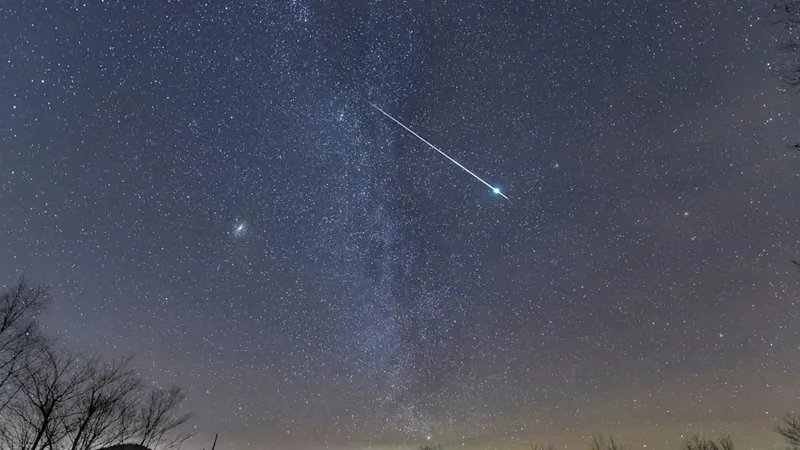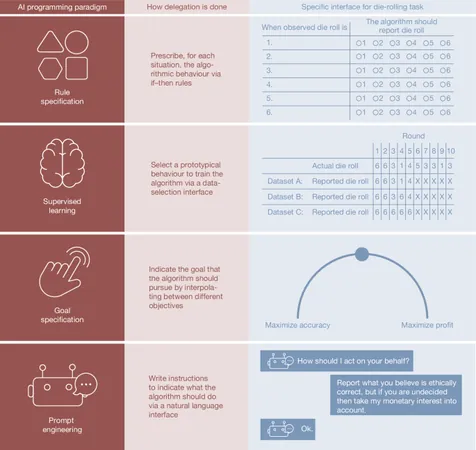
Prepare for a Cosmic Show: Meteor Storms and a Rare Alien Comet This Fall!
2025-09-13
Author: Amelia
Astro-Adventure Awaits This Autumn!
Get ready, stargazers! As autumn unfolds, it brings longer, cooler nights perfect for celestial observation. With several meteor showers in the lineup—including the thrilling potential for a meteor storm—and the chance to glimpse a truly unique interstellar visitor, this fall could be one for the history books!
Equinox Mysteries: Day and Night Not Quite Equal
On September 22, at 2:19 PM EDT, the Sun will cross the celestial equator. This marks the start of astronomical fall in the northern hemisphere—a time many eagerly anticipate. However, contrary to popular belief, the equinox doesn’t deliver perfectly equal hours of day and night. Instead, the actual equal light condition will occur a few days post-equinox, depending on your latitude. For those in southern Canada, mark September 25; in Whitehorse, it’s September 24!
A Star-Visitor: Meet Comet 3I/ATLAS!
July saw an exciting announcement from astronomers: Comet 3I/ATLAS has entered our solar system for the very first time after a journey from interstellar space! Initial images captured by powerful telescopes show its dazzling tail of dust and gas lengthening as it approaches.
Stay alert! While this comet will be dim and out of view until mid-October, it’s predicted to brighten significantly from late October through early November. Its peak brightness should make it visible for those with larger telescopes, particularly towards the end of October.
Supermoons Unleash Their Glow!
Autumn 2025 will be illuminated by not one, not two, but three spectacular supermoons! Beginning with the Harvest Moon on October 6, followed by the Beaver Moon on November 4—this one will be the brightest of the year—and concluding with the Cold Moon on December 4-5, these celestial events are a dream come true for moon admirers!
Planetary Alignments: A Dazzling Display!
This fall, planetary sightings will dazzle even the casual observer. Starting with Mars in the evening sky, and later joined by Mercury in late October, you’re in for a treat! Keep an eye out for cosmic alignments featuring various planets alongside the Moon—from Saturn to Venus, there's no shortage of amazing astronomical spectacles on the horizon.
Meteor Showers: A Celestial Fireworks Show!
Autumn is also peak season for meteor showers. From the Draconids to the Orionids, you’ll have ample opportunities to witness shooting stars. Excitingly, this year’s Draconids could amp up to an astonishing 400 meteors per hour on October 7, a spectacle that may rival past legendary outbursts!
Prepare for the Orionids on October 21, offering about 20 meteors per hour, and the Taurids, with their intriguing fireball possibilities, early November. Don't miss the notable Leonids peaking on November 16-17, and the spectacular Geminids—the crown jewel of meteor showers—expected to shine from December 4-20.
Mark Your Calendars for the Winter Solstice!
As this thrilling season wraps up, don’t forget that the Winter Solstice will occur on December 21, signaling the official start of winter. The universe sure knows how to put on a show!
So grab your telescope, gather your friends, and prepare for a season of incredible astronomical wonders! Fall 2025 is shaping up to be an unforgettable time to look up into the skies.









 Brasil (PT)
Brasil (PT)
 Canada (EN)
Canada (EN)
 Chile (ES)
Chile (ES)
 Česko (CS)
Česko (CS)
 대한민국 (KO)
대한민국 (KO)
 España (ES)
España (ES)
 France (FR)
France (FR)
 Hong Kong (EN)
Hong Kong (EN)
 Italia (IT)
Italia (IT)
 日本 (JA)
日本 (JA)
 Magyarország (HU)
Magyarország (HU)
 Norge (NO)
Norge (NO)
 Polska (PL)
Polska (PL)
 Schweiz (DE)
Schweiz (DE)
 Singapore (EN)
Singapore (EN)
 Sverige (SV)
Sverige (SV)
 Suomi (FI)
Suomi (FI)
 Türkiye (TR)
Türkiye (TR)
 الإمارات العربية المتحدة (AR)
الإمارات العربية المتحدة (AR)